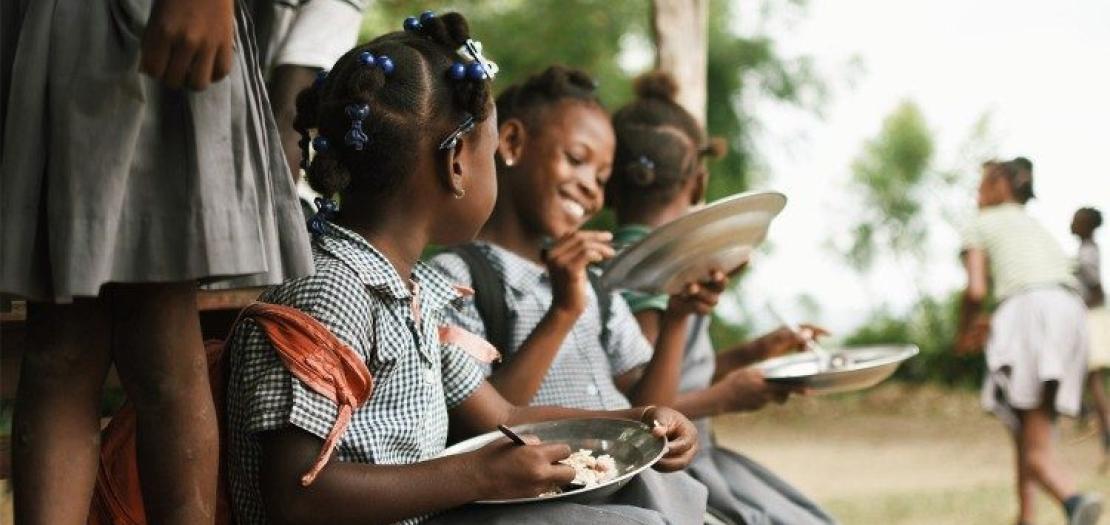Issued by the Catholic Center for Studies and Media - Jordan. Editor-in-chief Fr. Rif'at Bader - موقع أبونا abouna.org

Mary's Meals provides meals for school children around the world, including in Haiti
We live in a world of contrast. There is so much to celebrate, but with 148 million children under the age of five suffering from stunting due to malnutrition, there is also so much cause for concern.
In our world, despite this global hunger, a staggering 931 million tons of food are wasted each year.
Amidst this, organizations like Mary’s Meals bring hope to some of the most forgotten corners of the globe by, quite simply, and feeding children.
“We feed children. That's the only thing we do,” says Paloma García Ovejero, International Media Manager at Mary’s Meals. "And we do it very well.”
It’s true. They do it extremely well. Mary’s Meals is present in 16 countries around the world, spanning Africa, Asia, Latin America, and the Caribbean.
From feeding schoolchildren in Malawi and Liberia to reaching remote villages in South Sudan, Mary’s Meals is present where it is most needed. The organization feeds almost 2.5 million children, but, as García Ovejero stresses, the need is greater and there is always another child, somewhere else, waiting to be fed.
“There are seventy million children around the world who are not able to eat or study,” she says, “so we have a lot to do, and we are in a hurry because they are hungry.”
García Ovejero prompts us to examine our conscience when she tells us that feeding a single child for an entire year only costs 22 euros. “That’s 10 cents a day," she emphasizes.
So, there is enough money and there is enough food in the world. “Hunger can be tackled right now," she says.
Mary’s Meals is, in fact, tackling hunger by offering practical solutions to this global problem.
García Ovejero explains that by focusing on local food sources and volunteers, the organization empowers communities to take charge of their own development.
“We help and then leave once the people are able to do things by themselves. But it is very important for us to keep the promise that once we arrive at a place, a school, a community, a country, we will feed the children until they don’t need us anymore," she says.
Mary’s Meals is designed for long-term sustainability. It is not “a crisis innovation or an emergency appeal." It's about lasting change: being part of a community until the community no longer needs help.
By focusing on building local capacity, Mary’s Meals ensures that, once a community can feed its children independently, the charity can move on to the next area in need.
We give them the know-how, says García Ovejero, “but it is then up to them to keep that safe, protect the food from robbers, and feed the children every day.”
Mary Meals’ meals are full ones, offering children all the nutrition necessary to thrive, but they are also school meals, meaning “you have to go to school to get one."
García Ovejero explains that “if mothers can send their children to school, they know that at least they are not going to die because they will eat once a day." Each meal means a new life and a new future for somebody who would otherwise be hungry.
In areas where the charity works, education becomes a path out of hunger. When children attend school regularly, they not only receive a meal, but they are also given the opportunity to build the skills they need to secure a better life.
The mission’s strength is in its simplicity: feeding children, bringing hope and giving life. In places like Haiti, where gangs have taken over the cities, plummeting the country into chaos, or in Kenya, where droughts have left farmers in trouble and communities without food, Mary's Meals is making a profound difference, reminding us that every contribution can help make a lasting difference to all children, wherever they may be, one meal at a time.







